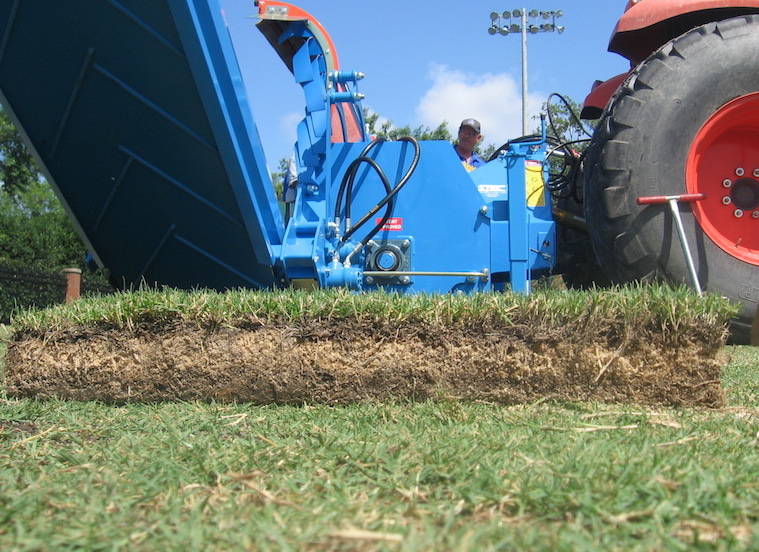From Dr. Grady Miller’s “Q and A” column in the May issue of SportsTurf:
Q: Our school system does not have much money. As a head coach (football), I get a little extra money to take care of the fields during the summer. I usually just try to keep them mowed and if there is some extra booster money, maybe apply one fertilization before fall. The school pays a contractor to apply a pre-emergence in early March so crabgrass is not usually an issue unless our fields go into summer really beat up. So my question is, what you would consider to be a good grass maintenance program for me to follow in the summer? I mow football, practice football, baseball, and softball. Another coach takes care of the “dirt” on the baseball and softball fields.
A: Questions related to this subject are pretty common each year. I realize that most coaches get into coaching because they love their sport, not because they wanted to take care of athletic fields. I have attended a few coaching clinics and heard the frustration expressed by coaches trying to figure out the best way to manage their fields. Many coaches have had to learn turfgrass agronomics on the job through trial and error with little to no training. The lack of quality equipment and adequate supplies for field maintenance may compound the problem.
No coach wants a player hurt because of the fields and they realize that athletes enjoy playing on quality surfaces. For this reason, I would encourage everyone involved in secondary school athletics to challenge their school or school district to consider the personnel options for taking care of their fields. I believe that if the school does not have a dedicated field/grounds staff, then contracting out some or all of the field maintenance is usually the best option. I am not saying a coach cannot be a great groundskeeper, but I find most either do not have the interest or expertise. Because of state laws related to pesticides, outside contracting those applications is often the entry point for school districts to use non-school employees for field maintenance.
Coach, I do not mean to take anything away from your desire and ability to take care of your athletic field. You probably already have a feel for your field conditions and know that some fields will need more aggressive maintenance practices than others. I would start with a plan to address bare areas on fields. Start renovation work as soon as the field is taken out of use for the summer. If the bare areas are larger than 10 square feet, develop a sprigging, sodding or plugging plan and initiate the work as soon as possible. One can often use their existing field as a source of plant material for light renovations.
From your comments, it sounds like your fields usually go into the summer a bit worn but not to the point that renovation is needed. If that is the case, then you are mainly looking at fertilization, aeration, and mowing. For fertilization, refer to soil test recommendations so that you are not applying something that you do not need. Your field will need nitrogen fertilizer to maximize turf density and recovery from damage, but it may (or may not) need other nutrients. The rule of thumb is to apply 1 pound of nitrogen per 1000 square feet per growing month. I think it is fine to use a lower rate if your turf is dense and healthy; whereas you may want to even increase the rate in localized area that needs additional inputs for healthy growth in thin areas.
Aerification is very important for turfgrass health on high-use athletic fields. Use whatever equipment you have available for core aerification and do it as often as possible. I would suggest at least two aerifications during the summer. If you do not have aerification equipment, there are companies that will bring their equipment to the site and complete this task for a nominal fee.
You mentioned your mowing practices. The more frequent you mow bermudagrass when it is actively growing the better the turf density. For bermudagrass keep the height of cut below 2 inches. For hybrid bermudagrass closer to 1 inch is much better. If your schedule allows, I would suggest mowing at least two times per week in the summer months. In addition to increasing turfgrass density, regular mowing can assist with your weed-control program. Mowing is probably your most important practice given a minimum budget.
For weed control, you have the established pre-emergence program. You may need to implement a post-emergence program. If weeds begin to grow, tailor your post-control program to your weed species. You may even be able to get away with spot spraying problem areas. Your local county extension service can help you with weed identification and control suggestions.
I know those are general recommendations for you to consider, but this approach often works with low-maintenance fields. If there are specific issues (e.g., deep ruts in the field, invasive weeds, severe compaction, standing water) then we may need to consider more aggressive approaches specific to your issues. Otherwise, careful attention to fertilization, aeration, mowing, and weed control are the practices that will give you the greatest return.


